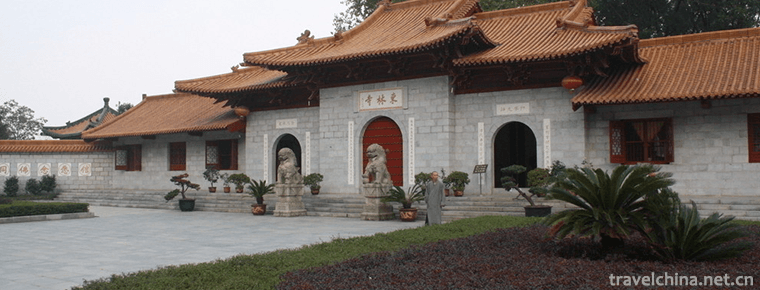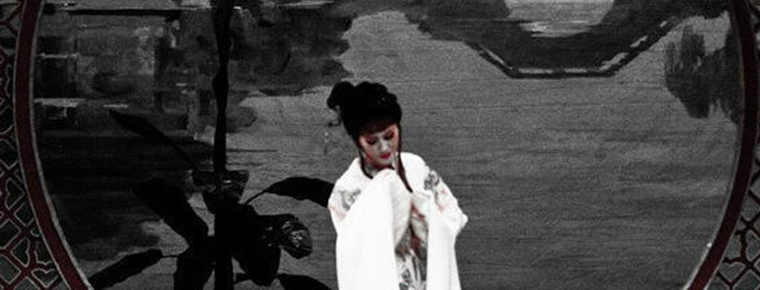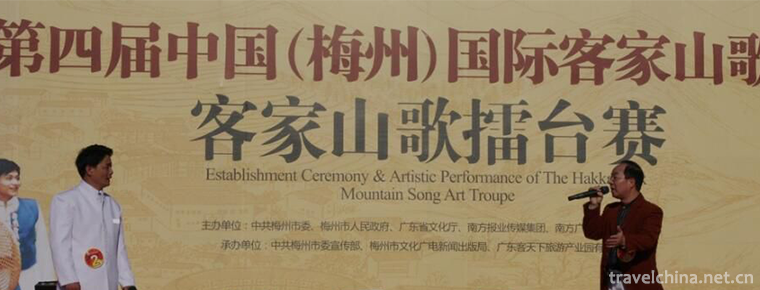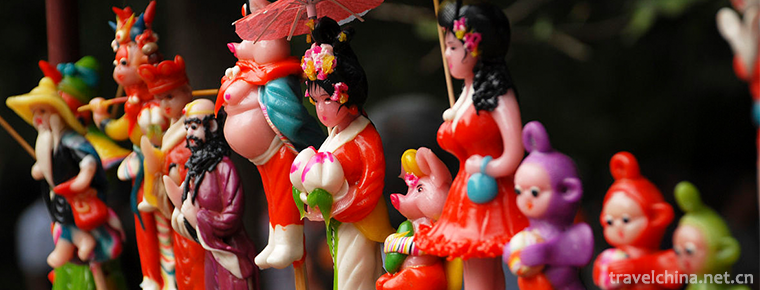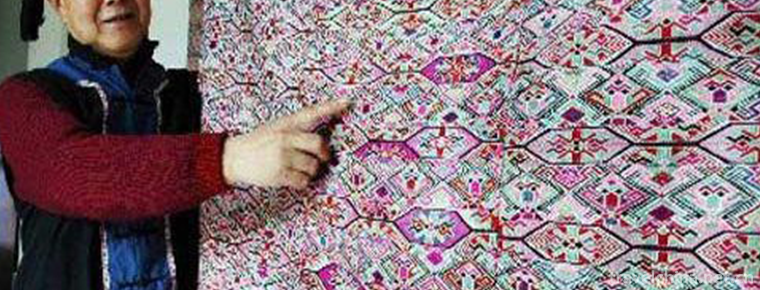Panda Dance
Panda Dance
Panda dance is a traditional dance originating in Jiuzhaigou County. Every year on the 15th and 16th of the first lunar month, some of the Baima Tibetans wear panda masks to exorcise evil spirits. This unique sacrificial dance has been passed down from generation to generation in the way of family inheritance. At the age of seven or eight, Mao Yunan studied Panda Dance with Uncle Yang Jinbao, according to the wind. As a rule, he was not allowed to wear panda masks until he reached the age of 15 to participate in official sacrificial performances in the village.
On November 11, 2014, panda dance was approved by the State Council and listed in the fourth batch of national intangible cultural heritage list.
brief introduction
Baima Tibetans have always retained the custom of dancing "Zeus idols". Baima Tibetans dance masks, Cao Cao Cao and Cao Mu, which are called "Zeus idols", are typical Nuo dances. The dance originates from the ancient Benbo "Baibeast Dance". On the first day of Baima Tibetans'dancing, that is, on the sixth day of the first lunar month, they want to dance a kind of "Chao Cover" dance with a mask on their head, that is, the old bear dance. According to legend, Baima Tibetans are "snatchers". (Black Bear) and "Duoga" (White Bear) are descendants of the combination. Devils and monsters fear the bear god, so dancers can disguise the bear God and subdue all the ghosts. During the performance, a performer wears a black bear head (boneless specimen), carries wooden sticks and wooden knives and spears, and leaps forward with the sound of gongs and drums. In modern times, with the emergence of the word "Duoga Dance" (White Panda Dance) has become a panda. Dance.
Panda dance has been appraised by the second batch of provincial intangible cultural heritage list appraisal committee in Sichuan province, and considered by the joint meeting of Sichuan intangible cultural heritage protection workshops, it has been listed as the second batch of Sichuan intangible cultural heritage list.
Baima Tibetan people live in Tangzhu River and upper and middle reaches of Baishui River in the southwest of Jiuzhaigou County, with a total population of more than 4600. Baima people are good at singing and dancing, hospitable and have a legendary and unique culture.
Historical sources
Baima Tibetan has a long history. During the Eastern Expedition of Tubo in the Sui and Tang Dynasties (618 A.D.), it was a place for military strategists to compete for. Later, Tibetan soldiers stayed behind and intermarried with local people (Di people), gradually forming a unique integration culture of Baima people, that is, the integration of Diqiang culture and Tibetan culture.
In the early days of Songzan Ganbu, Ben religion prevailed. An investigation report on Ben religion in Western Sichuan stated: "During Songzan Ganbu's Eastern Expedition, there were benzoic wizards accompanying the troops, and there were large benzoic wizards in every thousand families, called La Bo, and a small wizard in every battle group, called La Ba." Benzoic Masters wore animal masks when leading soldiers to sacrifice. In the period of democratic reform, these masks remained. There are only twelve left now. So what people call "twelve-phase dance" is actually twelve masks, such as lion, tiger, leopard, dragon, ox, chisel, phoenix, sacrifice, ghost, ghost, ugly Mo (earth mother) and so on, instead of the twelve zodiac signs. After the general panda dance is over, the "hundred beasts dance" is performed on the seventh day of the first month of the first month. When performing the hundred beasts dance, a banner of Mountain God is erected with a naked body and a shoulder-cape tiger painted on it. Skin, right-handed stone axe, left-handed holding nude baby tribal protection god image, dozens of masked actors follow a wizard, and jump counter-clockwise in reverse circles. Body movements are mainly reflected in the changes of hands and feet. Dance for two sections, each section is divided into 10-15 segments, each section has some sets before. The second section shows the animals participating in the sacrifice before the sacrifice. Fear. Four of the dances imitate animal movements, such as Phoenix dance, monkey dance, ghost dance (imitating goat movements), etc. Zeus idol dance has no songs and no songs, mainly accompanied by percussion music, mainly with drums and cymbals.
Development
From Nov. 28 to Nov. 30, 2011, two journalists from seven CCTV programs "Local Land" entered Jiuzhaigou County, Aba Prefecture, taking the national intangible cultural heritage "Crepe Dance", provincial intangible cultural heritage "Panda Dance" and traditional splendid "Tumo Festival", unique dietary culture, exotic and colorful Baima Tibetan folk customs and other genres as the shooting content. Shooting and producing public welfare tourism and culture programs to show the unique and colorful folk culture of Jiuzhaigou County to the outside world.

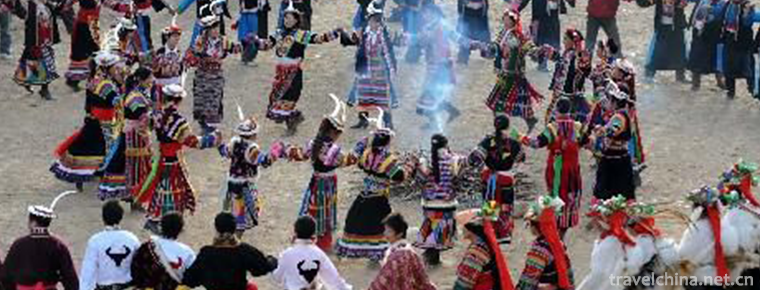
-
Green Lake Park
Cuihu Park is located at the foot of Luofeng Mountain in Kunming City.
Views: 202 Time 2018-10-21 -
Donglin Temple
Donglin Temple, located at the foot of Lushan Mountain, Jiujiang City, Jiangxi Province, is 16 kilometers north of Jiujiang City and 50 kilometers east of Lushan Luling Street. Because it is east of X.
Views: 124 Time 2018-12-20 -
Bay Leaf Jing Making Skills
In June 2008, the technique of making bay leaf Scriptures was listed in the national intangible cultural heritage protection list. The Beiye Sutra (Dai for "lazy") refers to the Buddhist.
Views: 133 Time 2019-04-04 -
Bru
Bru, Mongolian means throwing. Competitions are divided into two categories: long throw and accurate throw, mostly held in festive festivals. The long throw is to decide .
Views: 457 Time 2019-04-04 -
Fuxin agate carving
Fuxin agate carving, traditional art of Fuxin County, Liaoning Province, is one of the national intangible cultural heritage..
Views: 127 Time 2019-04-30 -
Jiangnan Shaoxing opera
Yueju Opera, the second largest opera in China, is also known as "the most widely circulated local opera" . Some people think that it is "the largest local opera",.
Views: 147 Time 2019-05-05 -
Hakka Folk Songs in Meizhou
Meizhou Hakka folk song is a Hakka folk song sung in Meizhou City, Guangdong Province (Meijiang District, Meixian District, Xingning City, Wuhua County, Fengshun County, Dapu County, Pingyuan County, .
Views: 117 Time 2019-06-03 -
dough figurine
Noodles, also known as face sculptures, models and flowers, are simple but highly artistic Chinese folk crafts. As early as the Han Dynasty, Chinese face sculpture art has been written down. It uses f.
Views: 127 Time 2019-06-05 -
Brocade Weaving Skills of Tujia Nationality
Tujia brocade weaving process is complex, in weaving, using the ancient pure wooden waist inclined loom weaving, through spinning and twisting, dyeing, inverting, drawing, reed loading, rolling, picki.
Views: 114 Time 2019-06-23 -
Xibo embroidery
Xibo embroidery has a long history and rich connotation. Xibo women are skillful and skillful in capturing the beautiful scenery in life. During more than 200 years of living in the western part of th.
Views: 378 Time 2019-07-01 -
Deyang City Construction
In January 2020, the science and Technology Department of Sichuan Province and the provincial development and Reform Commission approved to support Deyang and other six cities to carry out the construction of provincial innovative cities..
Views: 278 Time 2020-12-14


